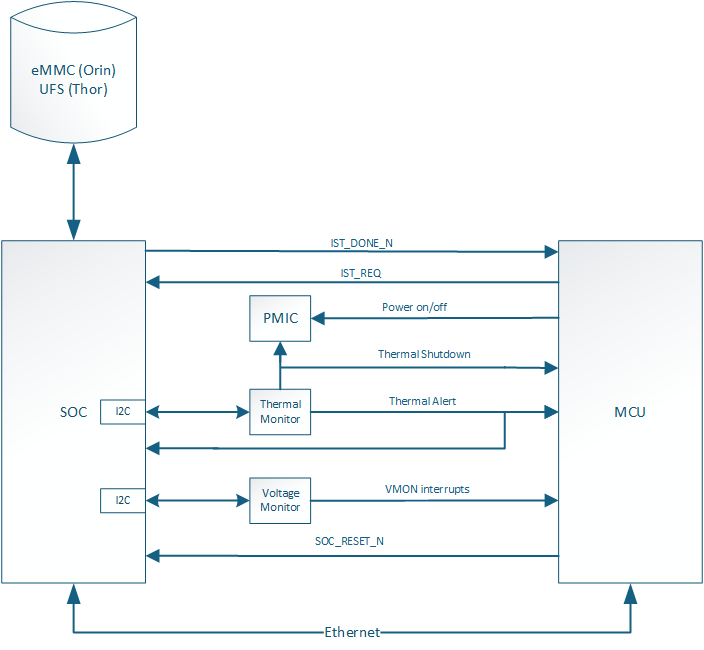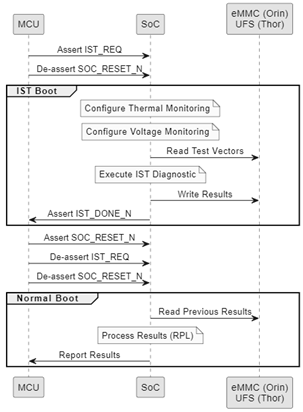Interaction Between the MCU and SoC#
MCU and SoC Interfaces#
The customer application on MCU can trigger the IST before SoC Power-on. Interfaces provided by IST-Manager SW module manage the triggering and monitoring of IST execution. The IST manager on the MCU controls the triggering of IST on the SoC through several interfaces:

Control Signals:
IST_REQ: MCU asserts this signal to request IST execution.
IST_DONE_N: SoC de-asserts this signal to notify IST completion to MCU.
SOC_RESET_N: MCU controls this signal to assert/de-assert SoC reset.
Communication Channel between MCU and SoC
Used by SoC to communicate IST Results to MCU.
The customer shall implement the SoC to MCU communication.
A reference example of using Ethernet is provided in DriveOS SDK.
Thermal/Voltage Monitoring:
MCU connects to external thermal/voltage monitors via I2C to program initial thresholds. (I2C connection to MCU not show in diagram)
SoC connects to external thermal/voltage monitors via I2C to update thresholds.
SoC programs alert and shutdown thresholds.
Thermal/Voltage alerts can abort IST execution.
MCU and SoC Interactions Flow#
The following diagram shows the flow of interactions between the MCU and SoC during IST execution.

Note
The customer application on MCU can abort IST via the interfaces provided by IST manager. This is typically done in case of a critical error detected, for example a Thermal shutdown or VMON interrupt. The reason for abort is recorded with the IST execution status.